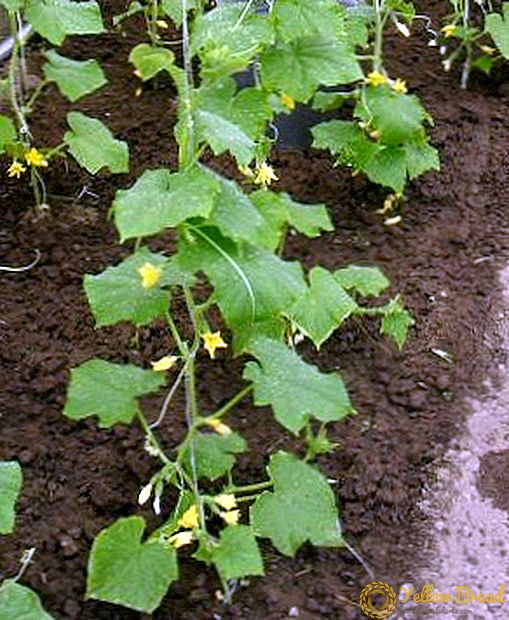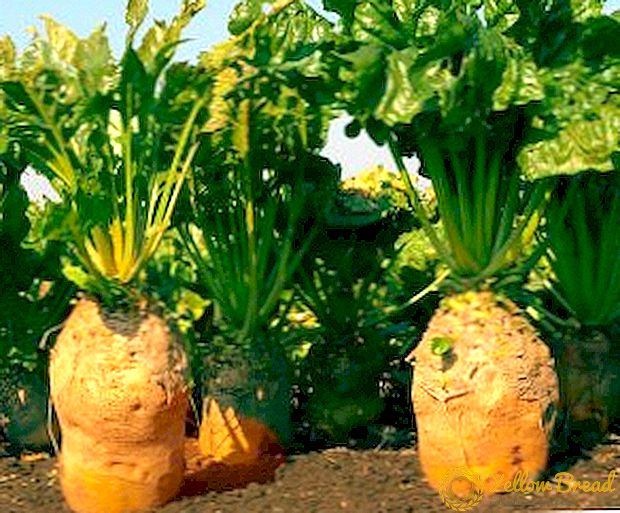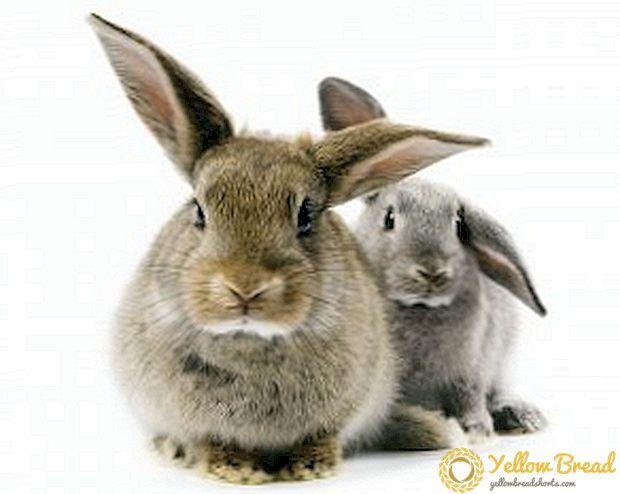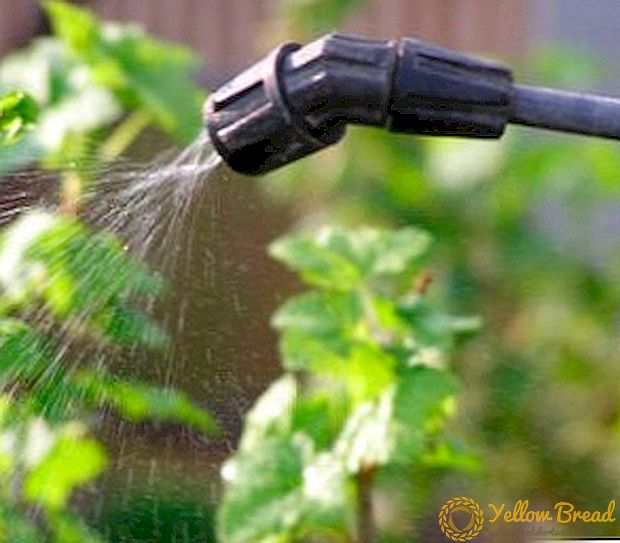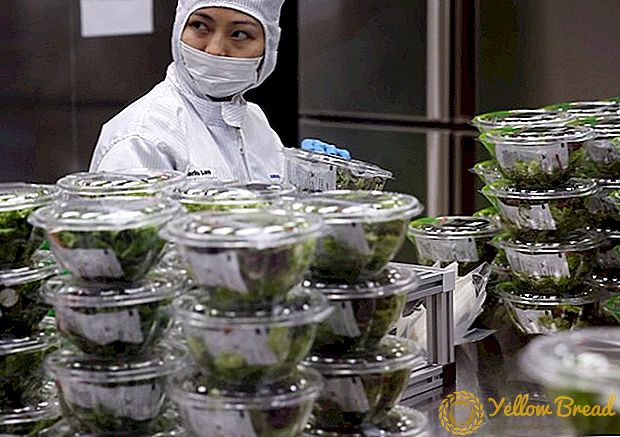
An exotic plant with an unusual name Hymenocallis is becoming increasingly popular. It is grown at home and in suburban areas. Not too experienced growers are afraid of such ornamental plants, believing that caring for them requires special knowledge and time consuming. And we will prove the opposite, using the example of an unusual, completely unpretentious plant.
- Genus description
- Popular species
- How to grow a plant
- From seed
- Of bulbs
- Home care
- Lighting
- Air humidity and temperature
- Watering
- Fertilizer
- Transfer
- Features care in the garden
- Diseases and pests of hymenocallis

Genus description
Gimenokallis is an incredibly beautiful herbaceous plant belonging to the genus Amarilis. Its homeland is considered to be Central and South America, India and Africa. In the wild, it is most often found on the banks of rivers and lakes. In culture grown both in open ground and at home. The bulb of the plant is rather large and resembles the shape of a pear; it is covered with dry, shiny scales. In mature hymenocallis, the tuber reaches 10 cm in diameter. The leaves are narrow, xiphoid form are collected in a thick fan at the base of the bulb. In length can reach 80-100 cm.Leaf color can be bright green, dark green and gray-green.
There are both evergreen species and those that shed their foliage. A distinctive feature of this plant is its unusual, incredibly decorative inflorescences, which crown a tall leafless fleshy flowering arrow. Around the umbrella core of the bud there are 6 narrow, long petals, their maximum length is 25 cm. After the flowering is over, oval-shaped seeds appear, covered with a soft shell.

Popular species
In the genus of plants there are more than 55 species, we consider the most popular of them.
- Gimenokallis coastal - a beautiful exotic plant, which is also called spider lily, despite the incredible decorativeness, caring for it will not be difficult. It reaches a height of 35-40 cm, spider-shaped flowers, have a wonderful aroma. Inflorescences of 2-3 buds form on the flowering arrow. Lanceolate leaves grow to 90 cm in length and 6 cm in width. Flowering lasts a very long time - from the beginning of February to the end of May.
- Gimenokallis Caribbean or Caribbean lily prefers to grow and get the right care at home. Extraordinary, amazing flowers can not be compared with any other indoor plant. White arachnid flowers with bright yellow anthers are able to become a beautiful decoration for your window. This species prefers solar windowsills and with proper care, can bloom three times during the growing season. The first buds with an incredible aroma unfold at the end of summer. Refers to evergreen perennials.
- Gimenokallis is pleasant or beautiful - in the wild it is found in arid subtropical forests. On a powerful peduncle 6-12 buds are formed, which gradually dissolve in succession. The shape of the flowers resemble umbrellas, and their aroma is very similar to the scent of lilies.
- Gimenokallis broadleaf - an ornamental herb that reaches a height of 60-70 cm. The leaves are xiphoid, on the leaf plate there is a characteristic central vein of this species. Umbrella buds adorn long twisted petals of 10-15 cm.

How to grow a plant
Propagation of hymenocallis is possible in two ways, by germinating seeds and dividing the bulbs.
From seed
Seeds of hymenocallis are grown quite difficult and long, so that they germinate, they need to provide proper care. Planting material slowly sprouts, the process can take from 2 weeks to several months. Preference should be given to the soil with a high content of sand and peat. Seedlings need to be watered regularly, preventing the soil from drying out, and also to protect from the scorching sun to avoid burns on young shoots.
Of bulbs
Bulb reproduction is considered a more convenient and simple way. When the plant reaches 4-5 years old, children form on the tuber to separate them, the plant is very carefully dug out, with small care removed small onion and immediately planted into the ground.The soil for growing an exotic flower should be loose; good drainage should also be provided.

Home care
Gimenokallis is an unpretentious plant, so caring for it at home will not be difficult. Adhering to simple rules, you can easily find an unusual, attractive plant in your home.
Lighting
The best place to grow hymenocallis in a pot will be a sunny window on the south side. The plant is very fond of light, but at the same time calmly refers to light short shading, so if it is not possible to provide a flower for the southern window sill, eastern and western will also do.

Air humidity and temperature
In nature, the plant is found on the banks of reservoirs, humidity plays an important role for its comfort.If the air in the room is too dry, you should take care of its moistening and put containers with water near the flower pot. During the growing season it will not be superfluous to sprinkle the leaves every day with separated water, but to avoid its contact with the buds. In summer, the ideal comfort temperature for an exotic flower is 22-24 ° C.
Watering
Bulbous perennial needs constant soil moistening, if you miss the moment and the ground dries out, it can turn into a drying foliage. Just do not confuse regular watering with abundant, excessive moisture is detrimental to bulbous, as it causes rotting of the tuber. 
Fertilizer
During the growing season, the flowers are fed with complex mineral fertilizers 1 time per week, this is necessary for the flowering to be lush and long. Do not forget about hymenocallis and in the period of rest, although at this time feeding is made no more than once a month.
Transfer
Ripe onions are repotted every 3-4 years. It is best to do this during the rest period, then the process will be completely painless. In order to provide abundant flowering, small pots should be preferred. The fact is that in the cramped grassy perennial produces more buds.
Features care in the garden
Gimenokallis is perfect for growing in the garden. It is necessary to take into account the fact that before planting the bulbs it is necessary to germinate, and only after that move them to the ground. To do this, use special boxes for seedlings, ordinary ceramic or plastic pots, the main thing is that in such a container there are holes for the drainage of excess water. Then the container is filled with sawdust and peat and the onion is placed to a depth of 5-7 cm. Then it is left to germinate for 2-3 weeks at a temperature not higher than 15 ° C. In late May, when the earth is already warm enough, you can repot the onion in open ground. Further care is not much different from home. Regular watering and mineral supplements should be ensured.At the end of the growing season, the bulbs are dug and stored in a dark, cool place until the next season. 
Diseases and pests of hymenocallis
With proper care, the plant is rarely exposed to parasites and diseases. Due to excess moisture, aphid or spider mite can appear. Fight them with insecticide treatments. For the same reason, rotting of the bulb may begin, in which case it should be immediately removed, cut off the affected areas, sprinkled with ashes or treated with Fundazol. The appearance on the foliage of small brown specks and black dots may indicate that the plant has become ill with anthracnose. When confirming the diagnosis, remove the damaged parts of the plant and burn them. The remaining healthy leaves are recommended to be treated with a fungicide. Another ailment that can affect hymenocallis is staganospores, its symptoms are red and black spots on the foliage. In the event of their appearance, the flower is sprayed with a solution of foundationol. To prepare it takes 3-4 g of the drug and 2-3 liters of water.

